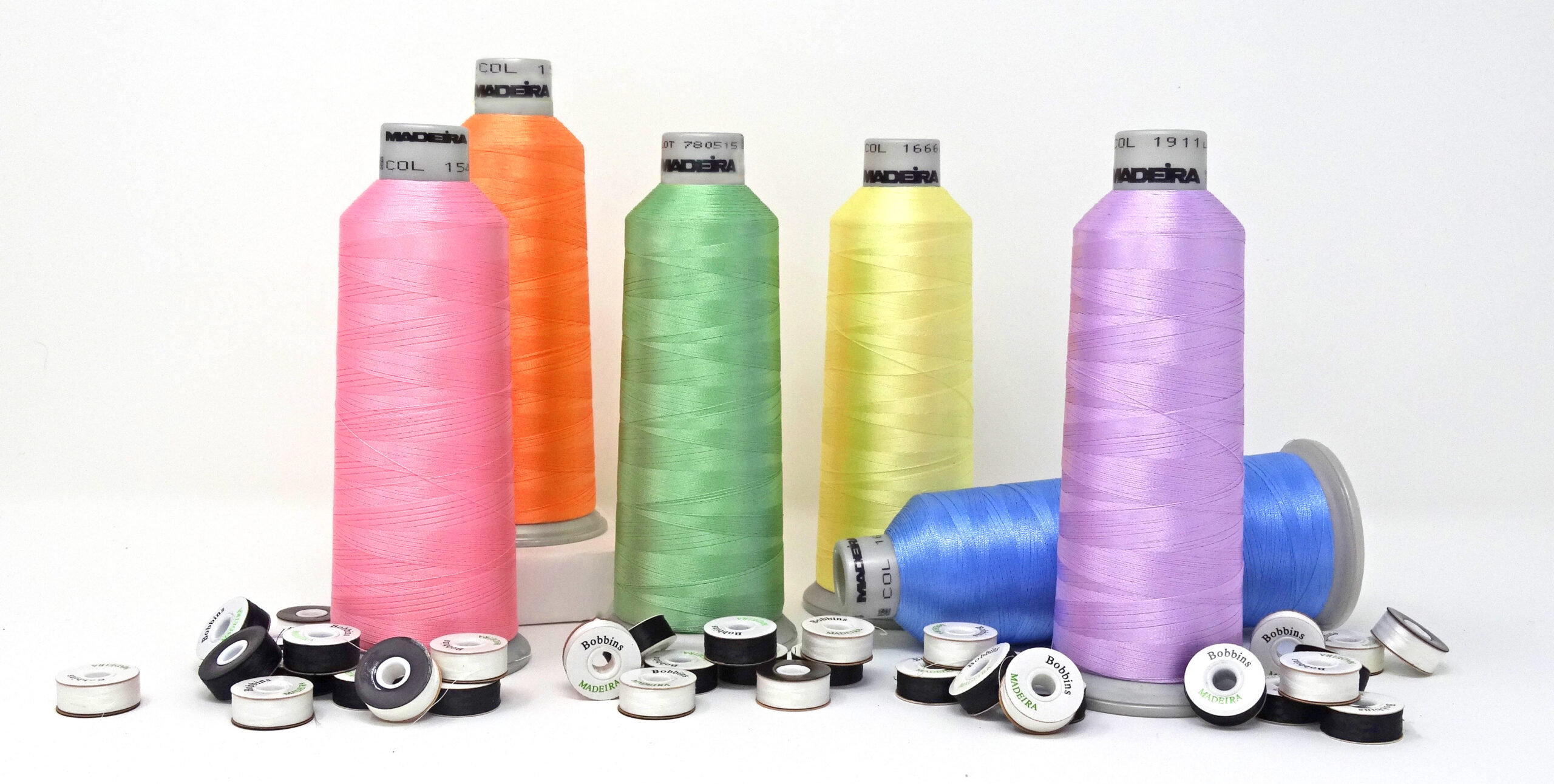When choosing embroidery thread, a company’s inventory may be based on whatever brand of thread came in the box of supplies received when the machines were purchased. Or the purchase decision may be influenced by whatever brand is cheapest. Sometimes the decision to buy is based on which manufacturer offers a particular color that may be otherwise hard to find.
For some embroiderers, brand loyalty is paramount, and all their thread inventory will come from one manufacturer. For others, they may use thread from two or three or more manufacturers, generally because of the durability of the thread or the availability of a certain color that is a favorite of a large client.
Whichever method you use, keep the following in mind to avoid making mistakes and lowering your profit:
Color
The smart way to manage a thread inventory is by starting with the basic colors. Most shops will use white and black, so stock up on those. Do some research and figure out what common school and corporate colors are in your area, and add those colors to your inventory. If you do work often for a particular holiday that has a precise color scheme, add those colors as well. Resist the urge to buy all the colors simply because they’re available. Also, resist the urge to show customers the entire color card from your thread manufacturer or manufacturers of choice. Color can be like candy; once you see the full array, you want a bit of everything.
Quality
When it comes to wasting money, inferior thread can cost a shop a lot more than it may seem at first glance. As with most things, the cost of the item is not the only cost that’s paid. When it comes to thread, a brand that is low quality can cost in terms of production time, in terms of ruined garments or missed deadlines, and in frustration and stress for the machine operator and shop owner. Make sure to always do the math when selecting a thread to purchase.
Usage
One way to ensure that embroidery thread stays in good condition, besides being concerned about the quality of the thread and how it’s stored, is to make sure the thread gets used often. For some shop owners, the urge to own all the colors is huge. A thread card, with its vast array of color choices, can make owning every shade of pink or 14 variations of blue almost irresistible, but wise shop owners will resist despite the urge.
In addition, try to avoid buying thread for a specific job — unless the job will be repeated. What you want to avoid is having a clutter of partially used cones that sit, becoming brittle and dusty, because there’s no demand for that particular color on a regular basis. That’s a waste of money and, eventually, product.
Production value
One thing that shops often neglect to consider is the production value of the thread. To figure out what a shop’s production value is, calculate the shop’s income per hour when machines are sewing out at top speed and then subtract the time it takes to repair each thread break. Every second of production time lost reduces your income for that hour. A thread that is poorly made or which breaks often may seem cheap when it comes to dollars and cents but could end up costing you a mint in lost time, stress, and frustration. Value isn’t always just about price, and doing the math can help show which thread brings the most value to your shop.




